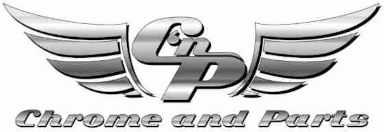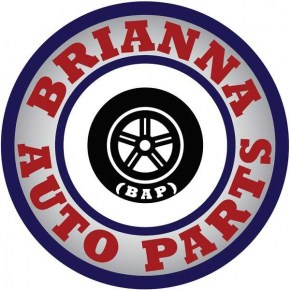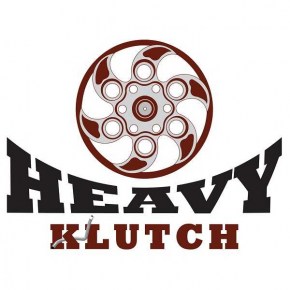It’s the turn of the new decade and so much is changing in the world. NASA astronauts Christina Koch and Jessica Meir becoming the first all-female International Space Station spacewalker. Prince Harry and Meghan Markle had a baby, The Toronto Raptors won their first NBA Championship, and Jeff Bezos is still the richest man in the world. Naturally, so is the world of trucking changing at a rapid pace. Demand for trucking has grown with ever-growing requirements in the economy, more produce, market accessibility and the e-commerce boom all contributing to its cause. Business is booming and don’t we all like that?
According to the American Trucking Associations (ATA), goods hauled by trucks are expected to grow at a three percent rate per year over the next five years and nearly 70% of the freight shipped throughout the United States travels by truck at some point in its journey. It is Big Business with much to lose and everyone in this space has been innovating to do better, gain a competitive advantage. Whether it’s through the pursuit of Efficiency, Driver Retention, Technological Advancements, Electric, and Autonomous Driving Trucks. Such rapid-fire changes on all fronts and we took the time to write this article on the most important thing in trucking. Yes, you guessed it right, Big Rig Trucks.
Here is the breakdown of the article for you to easily navigate through it.
- Performance
- Design and Comfort
- Technology Advancements
- Hybrid and Electric Trucks
- Autonomous Driving Trucks
Let us dive straight in, eyes on the road ahead.
Performance
It is the primary concern of businesses today, getting the best bang for their buck. Especially with the price of diesel on the rise putting additional pressure on profitability, efficiency being the key driver for profitability, a Mantra one could say. When discussing the future of trucks most of the Executives usually are throwing around these words “Engine performance, “Mechanical Failure, Downtime, and Fuel Efficiency” regarding this let’s elaborate what it is all about and how manufacturers are now stressing more importance to this in order to satisfy its savvy customers.
Bucking the old trend of bigger is better it is apparent that focus is being shifted from power to efficiency and minimizing operational costs. Where companies like Volvo, Navistar, Cummins, Paccar, and Freightliner all promoting better fuel economy, prolonged oil change intervals, cheaper oil change costs, and extended warranty periods all intended in communicating to the owner the benefit of a lower lifetime and operational costs. Thus, enabling owners to enjoy profitability in this competitive market.
The recent noteworthy engines to look forward to in 2022 in the performance quotient would be the following:
- Volvo introduced the higher-efficiency D13TC engine in its VNL models. According to the company, the new D13TC improves fuel efficiency by up to 3% over the first D13TC engine. That translates to savings of about $1,200 per year per truck, based on the average fuel price and attributing travel of 125,000 miles per year. There are three drive modes available with the new D13TC engine: extra efficiency, economy, and performance. The drive modes allow the driver to balance fuel efficiency with performance and driving conditions.
- Paccar - PACCAR MX Engine according to the manufacturer boasts it could do 1 million miles highlighting the fact that there will be less downtime for the owner and maximizing his time on the road. The company claims “PACCAR MX Engines will log up to one million miles without a major overhaul, almost double the life of comparable engines. PACCAR MX Engine’s B10 design life stands as the pinnacle of our promise to you – a lifetime of unparalleled durability.” That’s a big competitive advantage over other engines on the market. However, a key take-away in this would be the fact that that these engines will meet the test of time for their first owner, as well as their second bringing down the total cost of ownership.
- Cummins – X15 Cummins is the latest by Cummins in the heavy-duty engine category with an expanded X15 portfolio in 2020. The X15 series comes in three different trim levels, X15 Efficiency Series, X15 Productivity Series, and X15 Performance Series. According to Cummins, the X15 Efficiency Series has the best fuel economy of any big-bore engine in the industry, delivering up to 3.5% improved fuel economy from base engine improvements. In addition, the X15 is in lieu of meeting Greenhouse Gas (GHG) and 2021 fuel economy regulations a year ahead of schedule, so equipping owners for the future hassle-free.
Another important note to mention is that all manufacturers have had to deal with the emissions regulations as climate change pressure is gaining traction. Meeting those emissions was no easy task. Where most manufacturers struggled especially the likes of CAT who has not come out in top in this situation. However, it appears that most of the issues encountered in regulatory emission standards are in the process of being rectified and the market is coming to terms I would say.
Design
Apple made the world understand how important design is with its aesthetically pleasing designs for its products. We believe this has transcended into the trucking arena with better-looking trucks becoming ever more apparent than before. Long gone are the days of Rough Boxy Edges and a new dawn of space-age looking trucks are on the horizon. Manufacturers and Chassis makers are giving it so much importance along with being driver-centric. Prioritizing Driver Comfort and Drive Pleasure in order to help owners boost driver retention rates. Also, who doesn’t like nice looking trucks?
Let's breakdown this quotient into the best two looking trucks and the best features available for us truck enthusiasts and owners in 2022.
Volvo – VNL Series according to us is one of the best looking trucks out there. Beautiful Design with a futuristic vibe to it. In the case of functionality, it boasts the following features; a new hood, bumper and lower airflow deflector, which is intended to work together to manage airflow and efficiently channel it rearward. In addition, Volvo in its VNL has redesigned chassis fairings which optimize airflow past the drive wheels and tractor-trailer gap Signaling it to be much more aerodynamic than its predecessors contributing to the “efficiency cause”.
The VNL has done well in leap and bounds with the redesign of its working and living spaces, which has been optimized regarding driver comfort, maximizing productivity. According to Volvo, seating has been ergonomically optimized, while the dashboard and steering wheel bring controls and information efficiently to the driver with minimal distraction.
Other Notable Features in the VNL would be :
- An integrated telescopic ladder that quickly locks in place behind the cabinet when not in use.
- Reclining Bunk in a sleeper. Which is fully adjustable, claimed to be that it’s like putting your favorite easy chair in the cab.
- All Action Control Panel – In the VNL the sleeper control panel can be used to lock the doors, adjust bunk heating and cooling, set audio levels and close all shades simultaneously. An adjacent desktop swivels off the back wall for meals or laptop use on the bunk.
- Comfortable Environment – With the inclusion of innovative details like softer LED lighting, electrical outlets for the top bunk, easily reachable controls, smart storage arrays, larger refrigerator, removable floor mats create a warm, clean, calming environment.
Freightliner- The Freightliner Cascadia surely is a close competitor with its dashing looks and bountiful features onboard. The Cascadia under the trim level “AERO X” now includes an A-pillar deflector, tow hook covers as well as an optimally sloped hood, aerodynamic mirrors, door seals, side extenders, side extender seals, removable rear wheel covers, and full chassis fairings with enhanced flexible side skirts. Wait, the list does not stop, it also includes an optimized low ground-clearance bumper, optimized drive wheel fairings, front-wheel well closeouts, Aerodynamic Height Control, and Michelin X Line D+ Energy Tires. A handful of features again to achieve efficiency.
The new Cascadia interior, starting with the dashboard, which features an all-new instrument cluster and automotive-style steering wheel controls and switch placements. The Cascadia is all about its trim levels, even regarding its sleeper cabs which vary in availability from the 48-inch, 60-inch, and 72-inch mid-roof models, plus 60-inch and 72-inch raised-roof sleeper options.
Other Notable Features in the Cascadia would be:
- Driver Lounge - A driver lounge which incorporates dual-seat dining/working areas with a table-desk and a large, fold-down 40-inch by 80-inch bed.
- Refrigerator- There are also a new refrigerator and improved storage spaces that include shelving. A swing-out TV bracket accepts a 24-inch flat-panel television; ambient lighting and increased power outlets.
- Multi-Function Steering Wheel - Gauges are integrated with the instrument cluster and operated from simple controls on the steering wheel.
Well, one should definitely keep eyes on the road ahead in this space. Which is going to take a few rapid twists and turns. Especially with Tesla around the corner innovating with its futuristic designs.
Technology
Technology has been reshaping the world we live in, our economy, the way we socialize and naturally the trucking scene. The technological advancements in the trucking segment are so vast and spread across many fronts. We have picked a few technological advancements for us to be in the loop for 2022. On a broad sense this could be broken down into the following topics :
- Tech Assistance
- ELDs
- Load boards
Tech Assistance
Brake Assistance Systems - When a moving pedestrian enters the truck’s path, the system is able to apply input from the radar and camera sensors to warn the driver with visual and audible warnings simultaneously with partial emergency braking. If the driver doesn’t take action, full emergency braking brings the truck to a complete stop.
- Adaptive Cruise Control - In stop and go traffic, if the vehicle in front stops, the truck will also come to a stop and hold indefinitely. If the vehicle ahead moves in less than two seconds, the truck will resume moving at a safe following distance.
- Active lane assist - The system will then counter steer the truck back into its lane. When Adaptive Cruise Control is enabled, Lane Keep Assist uses micro steering movements to keep the vehicle centered in its detected lane.
- Traffic Sign Display - Usually front-facing camera identifies speed limit signs and displays them in the dash to enhance driver awareness.
- Automatic Wipers and Head Lamps - With the headlight switch is in “auto” mode, the Rain/Light sensor detects low light and turns on the headlights. As lighting conditions improve, the headlights automatically turn off. When wiper controls are in any position but “off,” the sensor automatically turns on the wipers when precipitation is detected and turns them off once precipitation stops.
- Intelligent High Beam - Camera technology automatically switches to low beams when it detects the headlights or tail lights of another vehicle, as well as city lights. Once the vehicle or city lights are out of sight, the high beams automatically come back on.
- Side Guard Assist – detecting objects in the passenger-side blind spot for the full length of the tractor and trailer. If the truck drifts into an already populated lane or attempts a right turn in city traffic with objects in its blind spot, audible and visual warnings will alert the driver.
ELDs
Electronic Logging Devices is an electronic hardware that is attached to a commercial motor vehicle engine to record driving hours and other data. Which is now a mandatory requirement according to the FMCSA 395.20 ELD Mandate.
ELDs helps managers with automated, paperless Hours of Service (HOS) in addition to collecting real-time data around arrival/departure times, wait times, loading/unloading times, fuel stops, and more. These real-time metrics are helping managers work smarter, providing the critical insights they need to make informed decisions around pricing, generate increased revenues and better manage the bottom line.
It is becoming far more common where ELDs are integrated with workforce management solutions. Which gives the ability to create far better employee experiences industrywide by identifying and reducing idle time, thereby improving productivity and potentially reducing payroll costs as well. Equipped with this data, logistics managers can improve scheduling in the future and boost productivity by enabling people to take control of their own schedules. In addition, it is already in practice making use of real-time data, more companies incentivize drivers for on-time deliveries.
This is a positive step as this new approach will motivate drivers and provide assurance that they are achieving fair and accurate pay for their work.
Load boards
Load boards are online load matching systems that allow shippers and freight brokers to post loads. These systems allow shippers and carriers to find each other and enter into agreements to move freight. Most trucking load boards are sophisticated and allow you to post and search for loads using several criteria. Additionally, they provide various services for both freight brokers and carriers.
It’s a growing space and you see new mushroom load boards every day. Here are a few prominent Load Boards for you to use this 2022:
- DAT
- Truckstop.com
- 123Loadboard.com
Electric and Hydrogen
As we know a global Climate Change issue is now strongly driven by regulatory pressure to cut diesel pollution, in lieu of this and rising fuel prices, commercial truck makers have made announcements to deliver electric or hydrogen-fueled vehicles. Its 2022 and it looks like this could be the big year for electric Big Rigs.
In 2018, North American diesel and so-called Semi-Truck orders totaled to about 497,000 units. However, the word is still out on how electric trucks will pan out. As the limited range of most first-generation electric or hydrogen commercial trucks and a lack of charging infrastructure threaten to limit sales. Anyhow, Manufacturers are initially eyeing short-haul routes such as drayage services to or from ports or rail yards as likely first adopters of electric or hydrogen trucks.
With that in mind – below is a compiled list of Electric and Hydrogen Manufacturers and their respective timelines
- Tesla - Elon Musk puts heavy commercial trucks on the map in November 2017 when he unveiled the company’s futuristic, battery-powered Semi-Truck, booked hundreds of orders and as he promised manufacturing would start in the first half of 2020
- Volvo began production of its first fully-electric commercial truck in 2019, and it is expected to be sold in 2020 for short-haul operations in Europe. The truck maker plans to sell a vehicle based on the same drivetrain technology in North America starting in 2020
- Hyundai Motor Co has partnered with Swiss hydrogen company H2 Energy to sell 1,000 hydrogen fuel-cell electric trucks with a range of around 400 kilometers (249 miles) starting in 2020
- Daimler will launch its 250-mile range eCascadia in 2021, which is aimed at regional distribution and port services. Daimler said it will deliver a total of 30 prototypes to customers later this year for field-testing and expects to have the trucks in production in 2021.
- Toyota Motor Corp testing two prototype hydrogen fuel-cell electric trucks in “drayage” operations at California’s Los Angeles and Long Beach ports, which are served by more than 17,000 registered trucks. As a key advantage, Toyota claims is its hydrogen cells refuel about as fast as a diesel truck, while battery-electric trucks take hours to recharge.
Autonomous Driving
According to a study by the American Transport Research Institute on a percentage basis, driver salaries, benefits, and bonuses account for 43% of the cost of operating a truck. Efforts to reduce this significant chunk of costs, with the advent of AI and its application possibilities gave dawn to the future - autonomous driving is here. Of course, too much debate, posing various challenges to all stakeholders of the trucking industry such as the workforce, public policy regulators, technology strategists and business leaders trying to grapple with the technological, economic and cultural fall-out of self-driving trucks. Uncharted territory for mankind and it is all confusing and challenging.
The key players to watch out in this space not in any particular order:
- TuSimple - is a San Diego startup valued at $1.1 billion, seeking to automate long-haul trucking. UPS has invested in TuSimple in attempt to join the autonomous driving effort. Recently, it ended in a series funding of around 120 Million Dollars
- Waymo – the self-driving startup backed by Google’s parent company Alphabet, is best known as a leader in making autonomous driving systems for small cars and minivans. However, since 2017, Waymo has started to focus on autonomous trucks.
- Plus.ai – a Silicon Valley Company founded in 2016 by a group of Stanford Ph.D. classmates focused to develop self-driving trucks to enable large-scale commercialization of autonomous transport. Recently, Plus.ai closed a series funding of 200 Million Dollars
Plus.ai reported that one of its autonomous semi-truck was hauling about 40,000 pounds of butter and went on a three-day journey across the United States covering a distance of 2,800 miles, starting in Tulare, California and ending in Quakertown, Pennsylvania. They did so predominantly in a driverless mode with 0 disengaging maneuvers by the safety back-up driver and a system engineer in the truck throughout the trip. Surely a winning validation of this novelty method of trucking.
However, this was not a true-self driving experience. Since true self-driving vehicles are ones that the AI drives the truck entirely on its own and there isn’t any human assistance during the driving task. Which Industry parlance classifies as Level 4 or Level 5 trucks. Since the truck required a human driver to co-share the driving effort again classified as Level 2 or Level 3. The vehicles that co-share the driving task are described as being semi-autonomous.
This advancement has raised many fears amongst drivers as it could turn an entire profession obsolete in due time. It is indeed a rational fear that is backed by a recent study, conducted by Yale economist Dr. Charles Hodgson, which suggests that 210,000 long-haul driving jobs could be replaced by automation by 2030. Even recently spoken about by 2020 Presidential candidate Andrew Yang in which he told "87% of truckers are non-unionized, most are small mom-and-pop operators that own a few trucks that they've taken out massive loans to procure” and this issue facing truck drivers has caught national attention.
2022 is bumpy and a challenging road ahead
Over the next decade, in-home grocery delivery alone could grow five-fold and is predicted to reach $100 billion in consumer sales by 2025, capturing 20% of the total grocery retail market, according to a study by the Food Marketing Institute conducted by Nielsen. Another fun fact signifying the potential for the trucking industry.
However, Trucking rates are rising in many cases, including a 4.9% rate increase by FedEx and similar moves from other carriers. The forecast is for these rates to continue to rise, as demand for services also increases. Hence, the quest for profitability from owners and companies is very much efficiency-driven.
It’s 2022 and it is the future Marty McFly was in, the complexity of things may be why he wanted to go back.









